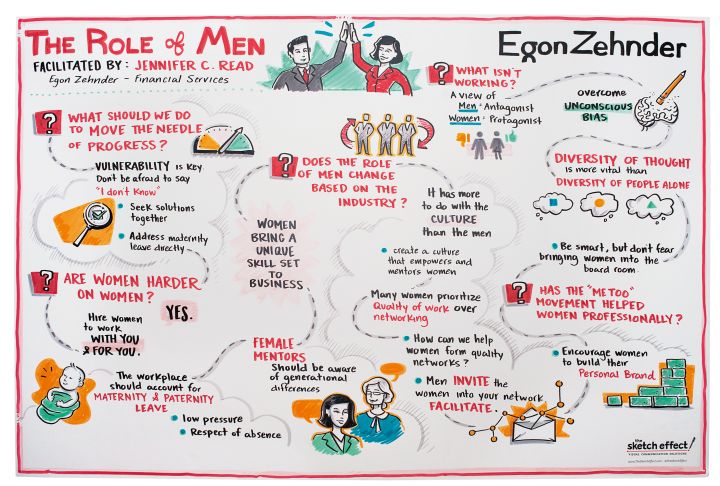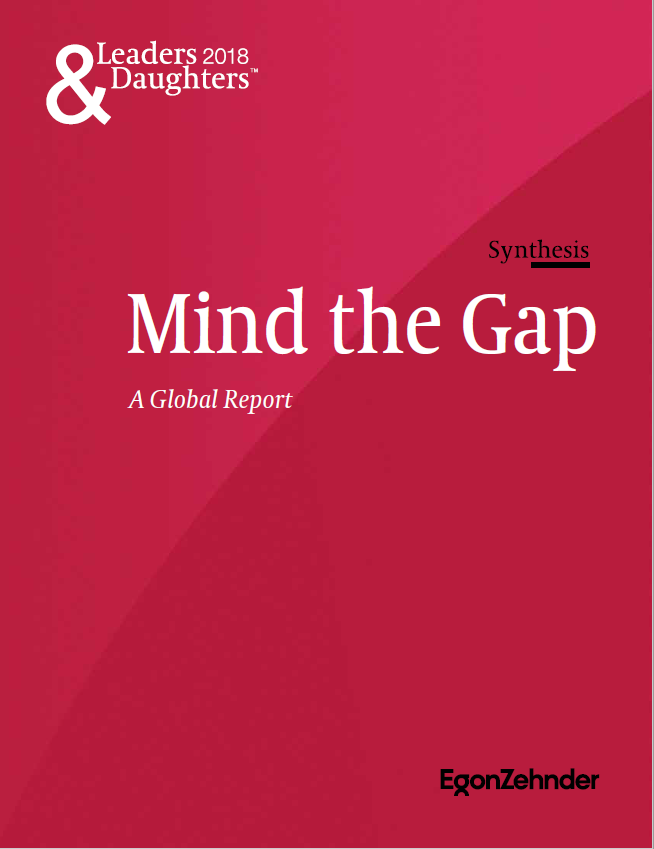We at Egon Zehnder believe that the world needs better leaders. We also believe that diverse leadership teams are better and more effective than homogenous teams. For this reason, we feel strongly that organizations must incorporate diversity and inclusion when finding and developing executive talent.
To support this goal, in 2015 we hosted our first Leaders & Daughters event in London, featuring C-suite executives and their daughters as representatives of the next generation of female leaders. Since that first event, we have expanded to 32 annual Leaders & Daughters events around the world, convening close to 6,000 people to speak with both senior executives and their mentees and/or daughters. Our goal has been to celebrate these leaders—and also to learn from them which practices and policies have been most effective at helping women succeed. “If diversifying your financial wealth is the way to grow your wealth,” remarked Greg Creed, CEO at Yum! Brands, at the Dallas event, then why not use diversity to grow an organization’s wealth?”
In 2018—a year in which the #metoo movement put a sharpened focus on women in the workplace—we focused on the fact that gender diversity in the C-suite is not changing quickly enough. At the San Francisco event, speaker Rachel Thomas, Co-founder and President of LeanIn.org and the Sheryl Sandberg & Dave Goldberg Family Foundation, presented data showing that only 1 in 5 C-suite executives is a woman - and fewer than 1 in 30 is a woman of color.
The slow pace of change comes despite a major effort by many companies to support the executive development of women. Despite this, some women report that they find themselves blocked from advancement; others choose to opt out of large corporations, concluding that the stress and the tradeoffs required to reach the C-suite outweigh its benefits. The numbers show that what organizations are doing—however well-intentioned—is not working as they should. Said Egon Zehnder consultant Luis Gustavo Giolo at the São Paulo gathering: “The goal is enabling the next female leaders to dream and carry out their plans, away from any kind of limitation or prejudice.”
To tackle this issue—and to better understand the “gap” in female leadership at the top, we titled our 2018 events “Mind the Gap”: a play on the London Tube, of course, but also a call to action. Said Chip Bergh, CEO of Levi Strauss & Co., at the Chicago event: “Diversity is about counting heads. Inclusion is about making heads count. Building an inclusive workplace where people can perform at their best is a super important job of a CEO.”
What, we asked our panelists and attendees, would make a difference? Which companies are finding a way to “Mind the Gap?” And what are policies that are working, as well as individual actions that current CEOs and aspiring top female executives can take today?
The responses to these questions—and some takeaways from our events around the world—are collected below. We hope you enjoy this summary—and that you can use the actions listed here both at your own organization and in your own professional development.
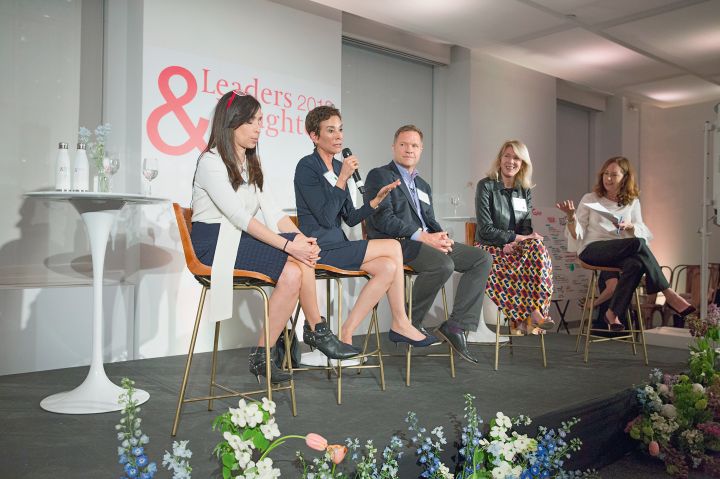
Individual Action
Many of the Leaders & Daughters events focused on what individuals—whether CEOs or rising female executives—could do to change their own environments. Said one attendee in Johannesburg: “As women, you need to find your own network and stop competing as men; you don’t fight a crocodile in water.”
Confidence, many participants said, is critical for any woman hoping to succeed in the executive space. In Seoul, one attendee commented: “The gender gap at the executive level we face today could also be due to our own mindset, not taking enough challenges and risks.” Kim Ann Mink, Chairman, CEO and President of Innophos, phrased it differently at the Miami gathering: “You are at the table: act like you deserve it. Reflect the confidence because you are superb. Reflect that confidence in every interaction.”
"Tone at the top is incredibly important..."
Debbie Lee James, former US Secretary of the Air Force
Several panelists also remarked on how important it is for women to choose a partner who will champion their career goals. Said one Hong Kong executive: “Marry the right person—one who’s supportive. Surround yourself by likeminded supportive females and mentors. And speak up!” They also emphasized being realistic about work-life balance—which, one panelist said, is more like a pendulum in that it swings one way, then the other; it’s never truly balanced. This doesn’t mean, however, that one should not strive for that balance. Said Rosario Altgelt, General Manager for LATAM Airlines, at the Buenos Aires event: “Accept duality. You can have two loves— work and family.”
Yet individual action is not only for the executives striving to succeed; it is also the responsibility of anyone at the top of an organization. “Tone at the top is incredibly important,” said Debbie Lee James, former US Secretary of the Air Force, at the Washington, DC event: She called the approach executives can use the “Three Ps and an A,” for Process, People, Policy, and Aspiration. The aspiration part, she explained, is critical if you want to go beyond the status quo.
Sometimes, individual action means realizing that an organization isn’t as committed to diversity goals as one may have thought. “Women in general stay too long,” said one panelist. “We are the good soldiers.” If your organization doesn’t go beyond words to action, and there isn’t a coalition of people to make change, sometimes the best thing to do is to leave.
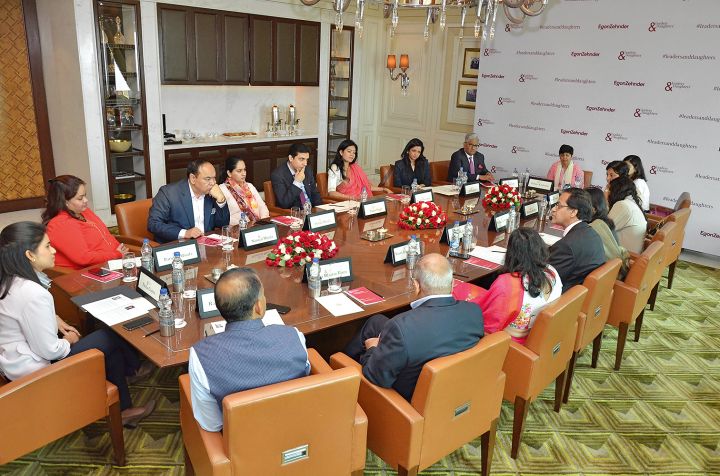
Organizational Action
One New York panelist, the CEO of a consumer company, phrased it best: “Change must be mixed into the mortar” of any organization that wants to make diversity a reality. That means that policies must be put in place that make diversity a requirement. It must be “part of the brand,” with new metrics that reward people supporting the process.
The use of data came up again and again as a way to push change by using it both as a means of education and a vehicle to demand change. Natasha Lamb, Managing Partner at Arjuna Capital, emphasized the importance of measuring, and addressing, the gender pay gap at the Boston event. “If you are going to attract and retain top talent,” she said, “you have to publish your gender pay gap and commit to closing it.” She used eBay as a positive example of a company that had met this issue head-on.
"If you are going to attract and retain top talent, you have to publish your gender pay gap and commit to closing it."
Natasha Lamb, Managing Partner at Arjuna Capital
There has been significant progress in establishing the business case for diversity and inclusion—at least in the countries where there’s enough data to make a difference. In these countries, the next step, many panelists said, is to help people understand unconscious bias. We naturally gravitate toward the familiar, and that perpetuates the status quo. We must change hiring practices to encourage the hiring of people that are truly different—whether in background or perspective— in order to truly change behaviors and corporate cultures. Said Egon Zehnder consultant Gabi Carvalho: ‘There are two types of clients; the ones that check the box and the ones who actually hold us accountable for finding diversity.”
That means moving beyond token women hires to creating enough scale to make a difference. Being the “only” woman on an executive team or in the board room is not effective. It makes it extremely challenging to find your voice—which, of course, is the reason you are in that room to begin with. But that takes time: The reality is that it takes years to change a senior leadership team, and companies must think about diversity as both a short-term goal and a long-term strategic shift.
To expand the pipeline, participants suggested the following changes to hiring policies:
- Require a diverse pool of candidates
- Blind resumes and blind filters
- Get to know the best and most diverse talent BEFORE there’s a role for them
- Change the team dynamic with anti-bias training
- Push a search back until you start seeing diverse candidates
- Publish your gender pay gap and commit to closing it
"There are two types of clients: the ones that check the box and the ones who actually hold us accountable for finding diversity."
Gabi Carvalho, Egon Zehnder consultant
The Role of Men
As gender diversity continues to move at a slower pace than hoped, it is becoming more and more clear that men must be part of the solution—especially because they are still in most of the decision-making roles. While it is important for women to network together and to support each other in their workplaces, it is also critical to have the support of male allies. Said Dame Cilla Snowball, Chair and CEO of AMV BBDO at the London event: “We need to get on with it! It is the cross-fertilization of men supporting women together with women supporting women that makes success.”
One New York panelist spoke about the importance of “Manbassadors”—men who go out of their way to support and include women—as a means of truly changing the culture inside a company. “When I became CEO I was the only female CEO in a publicly traded chemical company. I didn’t know whether to laugh or cry,” said Innophos’ Mink. ”But what helped me was male mentors.”
"It is the cross-fertilization of men supporting women together with women supporting women that makes success."
Dame Cilla Snowball, Chair and CEO of AMV BBDO
As the #metoo movement has rapidly spread around the globe—a movement that many panelists think is the most powerful social push in a generation—it has had a huge impact. This is a wound, many said, that had to be opened in order to heal. Said Kleber Santos, President of Capital One’s Retail and Direct Bank: “It’s been gut-wrenching. Having looked at the data and hearing stories from women and listening to those experiences, if that doesn’t move you when you’re in a position of power…”
Most panelists thought that #metoo marked an inflection point, in which women are losing their fear of speaking out. At the same time, panelists expressed concern that the movement might create a backlash for men, who might conclude that it’s simply easier to stay away from women than it is to work closely with them in such a fraught time. Said Brenda Freeman, Chief Marketing Officer at Magic Leap, at the Miami event: “We need to make sure that it’s not too risky [for men] to continue to coach and mentor.”
Panelists around the world offered some concrete suggestions for the role that men can play in Minding the Gap:
- Men need to be included in the conversation.
- Vulnerability is key: It’s okay for men to say “I don’t know.”
- Parental leave for both men and women creates understanding
- Men need to become advocates for women and speak up when others misbehave or are inappropriate
- Men need to make sure they invite women to networking events
- #metoo: The temptation is to put on the brakes on sponsorship or mentorship. Don’t.
Doing Sponsorship Right
Much has been written about the importance of having both male and female mentors as women move forward in their careers. But there is now a shift toward the notion of sponsorship, which is more active: it requires that a sponsor actually put themselves at risk to support an executive. Said one panelist: “Mentorship is the emphasis on skill building; sponsorship is the creation of opportunities.”
At the New York event, panelists came up with the following definitions of sponsorship:
- Taking a risk on a person; being proactive
- Building relationships that lead to advancement
- Advocating
- Giving access
- Giving the support needed to actually succeed
Finding a sponsor is as much the responsibility of the person sponsored as it is of the more experienced executive. Said Eva Castillo Sans, a board member of Bankia, at the Madrid gathering: “I have managed to go far in life because many people around me have provided support and offered me opportunities, and I, in turn, have taken them.” Said one panelist at the Brussels event: “If you don’t have a mentor, ask for one! Seniors will feel honored to be chosen.”
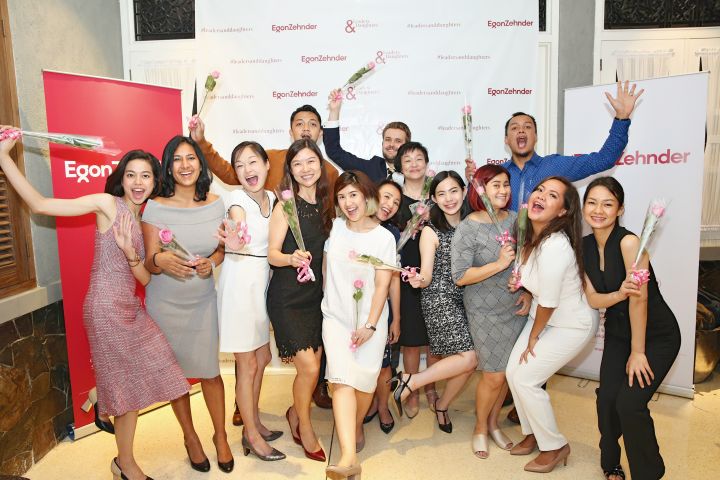
Women and men who have succeeded now feel that it’s their responsibility to help the next generation. Said one Hong Kong participant, a partner in a financial firm:
“I never dreamed I’d be partner. I want to make sure other young women in financial services don’t have to go through the same tough journey that I did.” Another panelist had a similar take. “I felt like I had to work twice as hard to be taken half as seriously. Now I want to give back.”
Those who are sponsored must also share their perspectives with their elders—and must be prepared to do the same thing when they reach the highest levels. “If you are the only woman in the boardroom,” said a panelist at the Johannesburg event, “ask yourself why you didn’t help other women rise up with you.” Said Cheryl Harris, Senior Vice President, Sourcing and Procurement Solutions at Allstate, in Chicago: “When I mentor someone, I expect them to teach me and to pay it forward. Those are my only asks.”
We hope that you have enjoyed this summary of our Leaders & Daughters event series, and that you will help us Mind the Gap by participating in future events or by sharing your own experiences. If you would like more information about Egon Zehnder’s Diversity and Inclusion practice, please contact Cynthia.Soledad@egonzehnder.com.





